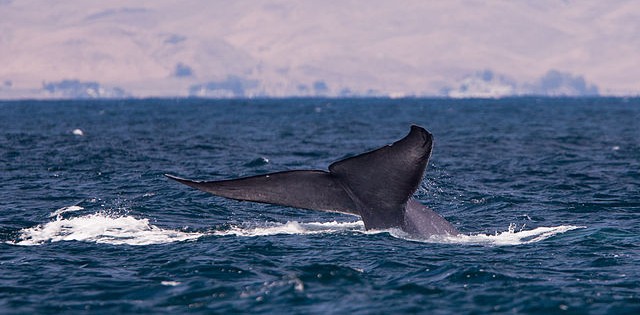
Imagine this. The hippo wallowing in its muddy wallow is the closest living relative to the whale diving and breaching and singing eerie arias. This is surely one of the all-time thrilling discoveries resulting from the convergence of two lines of inquiry: the bone line and the gene line.
First, the bone line. All cetaceans (whales, dolphins, porpoises) have a particular type of earbone possessed by no other animal. And since fossil bones are found in layers, the lower the layer, the longer ago the life was lived. Thus a relative chronology of one species evolving into another can be established. A series of fossils with that unique earbone, placed in chronological order, demonstrates that whales, believe it or not, evolved from a semi-aquatic hoofed mammal that was not unlike the cow, deer, pig, peccary (a sort of wild pig), and camel. The whale’s predecessor species was terrestrial and four-legged (some whales have vestigial femurs—thigh bones). They liked to wade, rather like the hippopotamus. Confirming this chronological succession is absolute dating, the type based on atoms and their rate of decay into other atoms.
Now turning to the hippo. They are artiodactyls—they have hooves and an even number of toes, as do the cow, deer, pig, peccary, and camel. These hoofed mammals all possess a unique pulley-shaped anklebone called an astragalas. Whales do not have any sort of vestigial astragalas. This lack would support a family tree showing whales diverging (called a branching event), early on, before cow et al. developed their astragalas.
But the gene story begs to differ. Whales and hippos share an identical base-pair sequence (SINE genes 4, 5, 6, and 7) in one of their chromosomes, suggesting close kinship. (SINEs are “short interspersed nuclear elements,” elements of the DNA sequence that enter an organism’s genome at some point and then get reproduced down through the generations. They sit there doing nothing or else they sit there doing something not yet understood.) The cow, deer, pig, and peccary also have SINEs, though not in the identical place in the chromosome. Camels have no SINEs at all. This would support a family tree showing camels diverging early on, before whale, hippo, cow, deer, pig, and peccary developed SINE genes.
Either whales diverged before hoofed mammals developed their astragalas, making their kinship with cow et al. rather distant, or camels diverged before the SINE genes entered in, making the camel’s kinship with other hoofed mammals rather distant.
Genes come in bones; bones come with genes. If bones lead to one conclusion and genes to another, something’s off. So now we have two hypothetical family trees. One, based on that odd anklebone, puts whales on the outs. The other, based on the identical gene sequence in one of the chromosomes, puts camels on the outs.
Suppose the ancestor of all these hoofed mammals had that pulley-shaped anklebone (the astragalas). The branching event that produced camels occurred before the SINEs came in. Then later, the whale line, which was close to the hippo line, lost its astragalas.
A sweet idea. But what would prove it? Fossil bones of an animal that possessed both the unique cetacean earbone and the unique anklebone (the astragalas). In 2001, in Pakistan, exactly such fossil bones were found.
Bingo!

